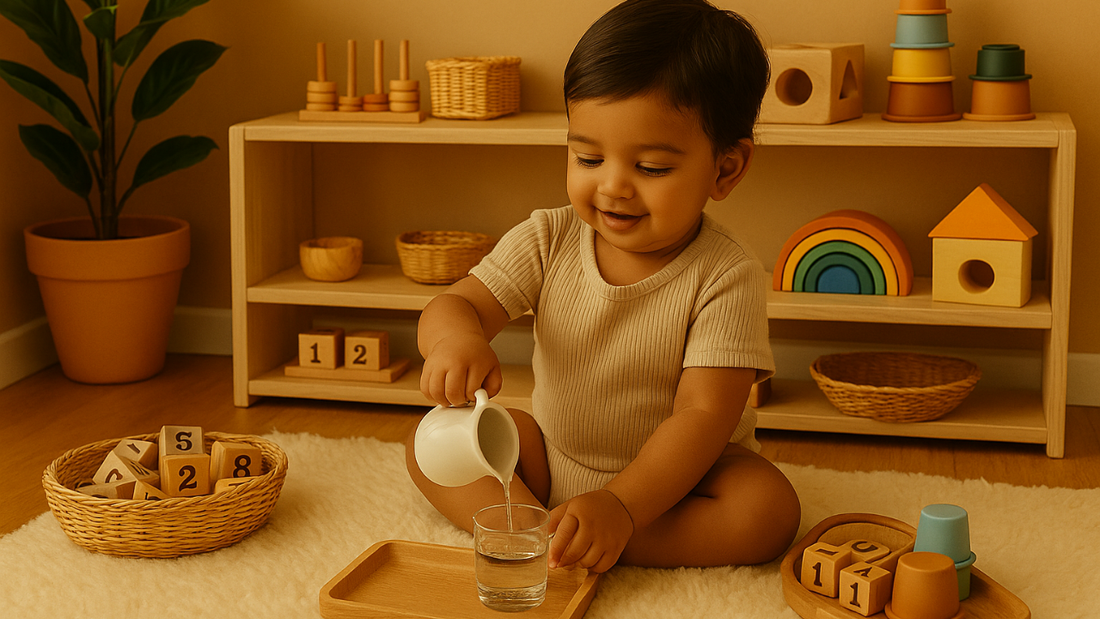
Montessori at Home: Simple Ways to Set Up Montessori-Style Learning
LiLLBUDMontessori isn’t just for schools; it's a way of thinking that you can easily apply at home. At its core, Montessori learning emphasizes independence, respect for children, and creating spaces that encourage exploration. You don't have to purchase an entire set of materials specially designed or recast your home. You can establish a Montessori-like space that will enhance your child's innate curiosity, with some careful modifications.
1. Create a Child-Friendly Environment
Montessori is all about keeping things accessible to the child. Do not set up out-of-reach, high shelves; place everything within their reach. Utilize low shelves, baskets, and trays so your child can select their own work and store it away by themselves.
Tip: Start small by arranging a low shelf with just two or three toys or activities. Follow the toy rotation strategy; you can rotate items every week to keep things interesting.
2. Choose Open-Ended Toys and Materials
Montessori toys are simple and made from natural materials. These are designed to spark imagination. You must have seen them around, think of wooden blocks, stacking cups, puzzles, or even everyday household items like measuring spoons or cloth napkins.
Why it works: Simple, open-ended items bring problem-solving and creativity into the children's play. They encourage children to use their imagination rather than rely on toys that “do the playing” for them. They prompt children to think for themselves instead of depending on playthings that "do the playing" for them.
3. Encourage Practical Life Skills
In Montessori, daily chores are an integral part of education. Watering the plants in a cup, swabbing crumbs, or assisting with setting the table are ways to build skills. "Practical life" exercises teach responsibility, patience, and coordination.
Try this: Give your toddler a child-sized broom or a small jug of water. Let them water themselves; it may take longer than doing it yourself, but the confidence your child gains is worth it.
4. Focus on One Activity at a Time
Clutter can be too much to handle. Try limiting toys and activities to a small number at a time, as Montessori strongly emphasizes focus and calmness. When your child finishes, encourage them for the cleanup, and ask them to put one item back before taking out another.
5. Respect Their Pace
Maybe the most crucial aspect of Montessori in the home is giving your child the lead. If she plays with blocks for five minutes or pours water back and forth for 30, learning is in the activity, not the product.
6. Nature as a Classroom
Montessori education values a strong connection with nature. You don’t need a big garden, rather go to a park or take them to a nearby nursery. With a simple walk, you both can collect leaves, watch ants, and learn how to take care of a houseplant can keep them curious and sharpen their observation skills.
Final Thoughts
Integrating Montessori principles into your home doesn’t require a big shift. You can create a child-friendly space by choosing thoughtful toys that foster independence and promote your child’s confidence and curiosity. Remember that Montessori is more about attitude than content. You need to start small and stay consistent. Watch your child flourish in an environment that feels like their own.

